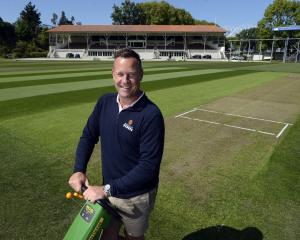Sir Elton John's planned concert at the Forsyth Barr Stadium late next year will test the success of the facility's much-vaunted flexibility.
Following the Rugby World Cup, during which the stadium must be at full capacity, with all temporary seating in place, the stadium will require a reconfiguration for the concert.
Dunedin Venues Management Ltd chief executive David Davies said all patrons at the concert would be seated.
The stadium would have a "traditional end-stage configuration", with the stage set up in the east (harbour) end of the facility.
The stadium's designers, Marko den Breems and Richard Breslin, earlier this year pointed to the "flat slabs" of concrete on the east and west ends of the stadium as one of the keys to its flexibility.
They could be used both for relocatable seating for larger events, or, when seating was removed, for anything from a dining hall to an exhibition space.
In this case, the east stand would be used for a stage, while the west stand would be used for seating, along with permanent seating in the south and north stands.
For the event, seats would also be set up on the stadium's pitch, with the number of seats available "in excess of 30,000".
Mr Davies said seating in the west stand would still be in place following the world cup.
Asked what equipment DVML would need to supply for the concert, Mr Davies said that was commercially sensitive, but was something that would be different for every event, depending on the deal struck.
"One size doesn't fit all. We're negotiating some of that as we speak."
Asked about acoustics in the stadium, and the possible effect on homes near the building, Mr Davies said the production company, on behalf of the performer, would have to sit down with the council and outline which areas would be affected by the noise.
Elton John did not have a reputation for "outlandish noise", but if, for instance, Ozzy Osborne was to perform, mitigation might have to be put in place.
"We would review that on a case-by-case basis," he said.
Draping could be used to dampen sound, helping acoustics both inside and outside the stadium, but the issue was becoming less of a problem than in the past, as sound systems were becoming more "directional".
Asked how the stadium pitch would be protected with thousands of people seated on it, Mr Davies said event timing meant any damage could be fixed before the pitch had to be used for sport.
The first sporting event at the ground would be four months after the concert.








